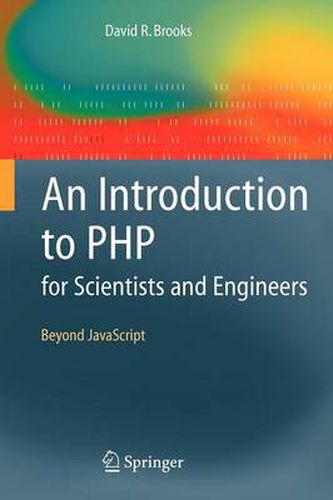Readings Newsletter
Become a Readings Member to make your shopping experience even easier.
Sign in or sign up for free!
You’re not far away from qualifying for FREE standard shipping within Australia
You’ve qualified for FREE standard shipping within Australia
The cart is loading…






This title is printed to order. This book may have been self-published. If so, we cannot guarantee the quality of the content. In the main most books will have gone through the editing process however some may not. We therefore suggest that you be aware of this before ordering this book. If in doubt check either the author or publisher’s details as we are unable to accept any returns unless they are faulty. Please contact us if you have any questions.
The best way to become acquainted with a subject is to write a book about it. -Benjamin Disraeli i. Background The purpose of this book is provide an introduction to using a server-side programming language to solve some kinds of computing problems that cannot be solved with a client-side language such as JavaScript. The language is PHP (originally created in 1994 by Danish/Icelandic programmer Rasmus Lerdorf as Personal Home Page Tools for dealing with his own web site). The PHP language does not have a formal specification, as C does, for example. It is developed and maintained by a User Group of volunteers and is, essentially, defined by the most recently available free download. Although this might seem to be a shaky foundation on which to make a commitment to learning a programming language, PHP has a very large world-wide base of users and applications, which ensures its role into the foreseeable future. This book should not be considered as a PHP reference source and it does not deal exhaustively even with those elements of the PHP language used in the book. (This should be considered a blessing by the casual programmer. ) If you need more information, there is a huge amount of information online about PHP. Hopefully, this book will help you filter this information to focus on solving typical science and engineering problems. An excellent online source for information about PHP is http://www. php. net/manual/en/index. php, maintained by the PHP 1 Documentation Group.
$9.00 standard shipping within Australia
FREE standard shipping within Australia for orders over $100.00
Express & International shipping calculated at checkout
This title is printed to order. This book may have been self-published. If so, we cannot guarantee the quality of the content. In the main most books will have gone through the editing process however some may not. We therefore suggest that you be aware of this before ordering this book. If in doubt check either the author or publisher’s details as we are unable to accept any returns unless they are faulty. Please contact us if you have any questions.
The best way to become acquainted with a subject is to write a book about it. -Benjamin Disraeli i. Background The purpose of this book is provide an introduction to using a server-side programming language to solve some kinds of computing problems that cannot be solved with a client-side language such as JavaScript. The language is PHP (originally created in 1994 by Danish/Icelandic programmer Rasmus Lerdorf as Personal Home Page Tools for dealing with his own web site). The PHP language does not have a formal specification, as C does, for example. It is developed and maintained by a User Group of volunteers and is, essentially, defined by the most recently available free download. Although this might seem to be a shaky foundation on which to make a commitment to learning a programming language, PHP has a very large world-wide base of users and applications, which ensures its role into the foreseeable future. This book should not be considered as a PHP reference source and it does not deal exhaustively even with those elements of the PHP language used in the book. (This should be considered a blessing by the casual programmer. ) If you need more information, there is a huge amount of information online about PHP. Hopefully, this book will help you filter this information to focus on solving typical science and engineering problems. An excellent online source for information about PHP is http://www. php. net/manual/en/index. php, maintained by the PHP 1 Documentation Group.